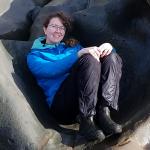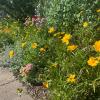On a cloudy morning, dozens of 7th and 8th graders piled out of buses at the top of a hill overlooking a scenic valley in Cashmere, Washington. They were about to embark on a fall science field trip at A&T Orchards to learn about local agriculture and help create habitat for invertebrates on the farm.
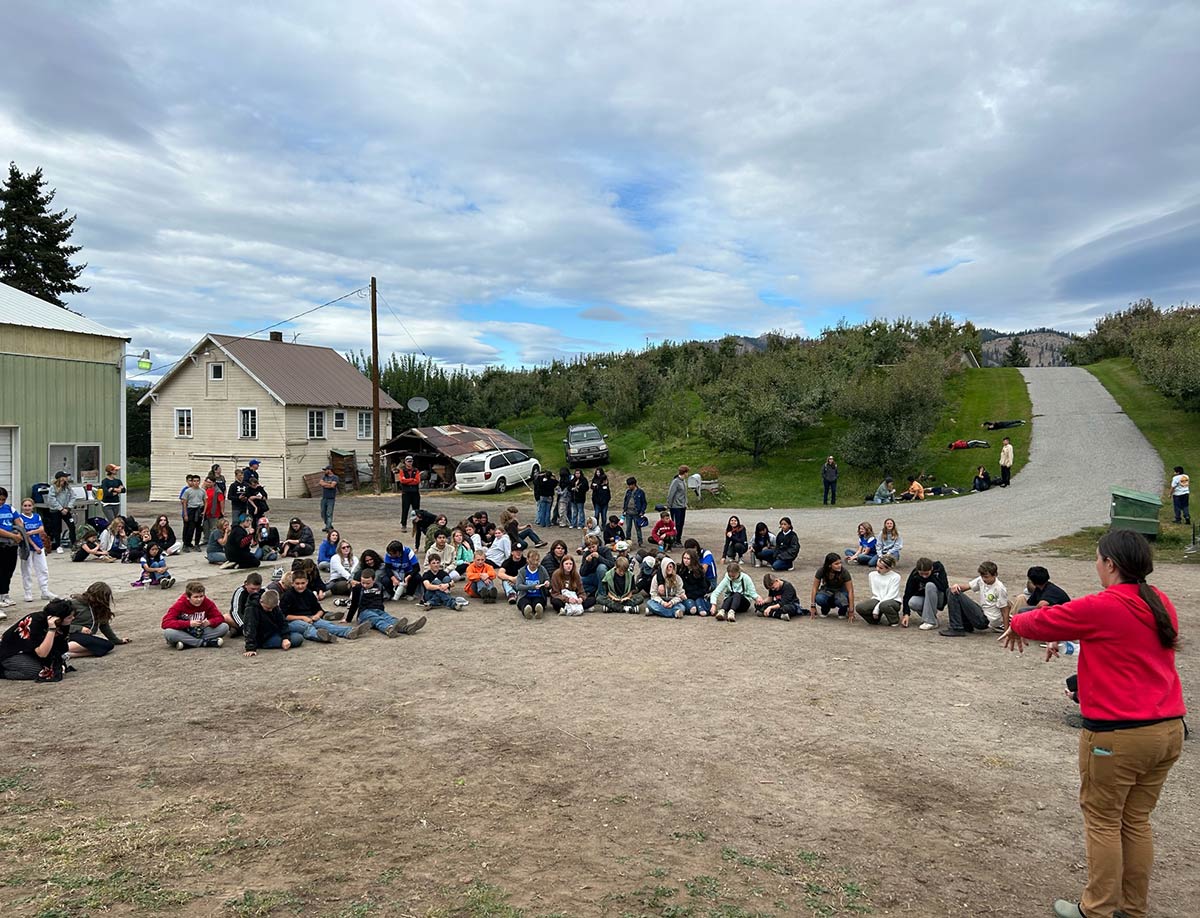
The students were there thanks to Aaron and Tab Hargrove, the owners of A&T Orchards, who are dedicated to using their farm to make our food supply more pollinator-friendly. Knowing this, I had invited them to participate in the USDA Conservation Innovation Grant (CIG) awarded to Xerces, which funded a new double hedgerow at the orchards. Tab Hargrove thought it a perfect opportunity to get science teacher Kelsie Maney and her students involved in farm conservation.
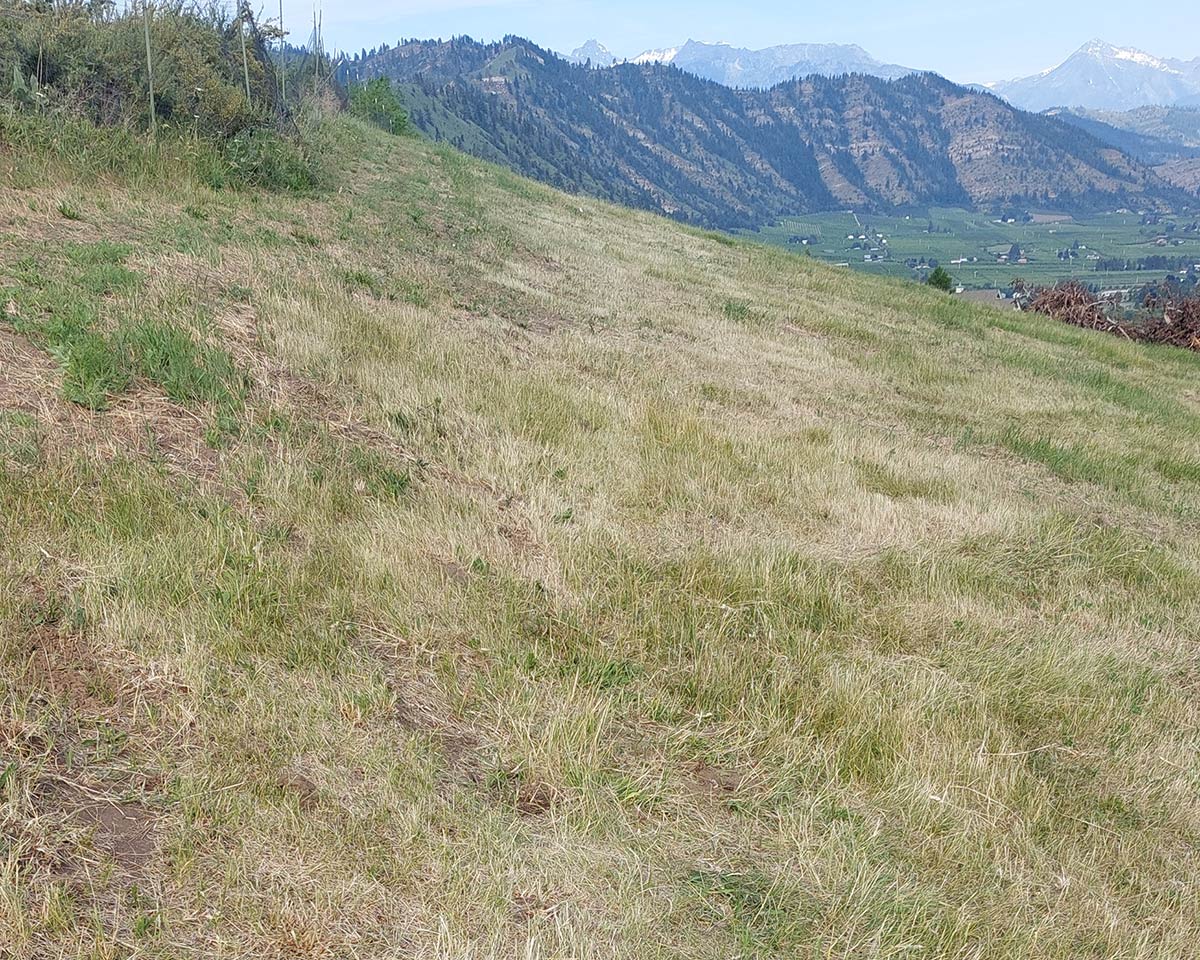
Throughout the day, students rotated between eight stations where they explored all aspects of orcharding, one of the main industries in Washington, the nation’s top producer of apples and pears. The students tasted apple varieties, learned how to prune, sampled for beneficial insects among the trees, learned about ethnobotany and native plants, and sampled the soil to quantify nutrients. At the top of a steep hillside, they helped plant a blooming hedgerow to nourish pollinators and other invertebrates to benefit the orchard’s production. Formerly planted with pears for the past 100 years, the soil was now a freshly tilled 12ft band across the top of the hill. This fresh tillage made the earth easier for students to plant, breaking up the hardpan and making space for new roots.
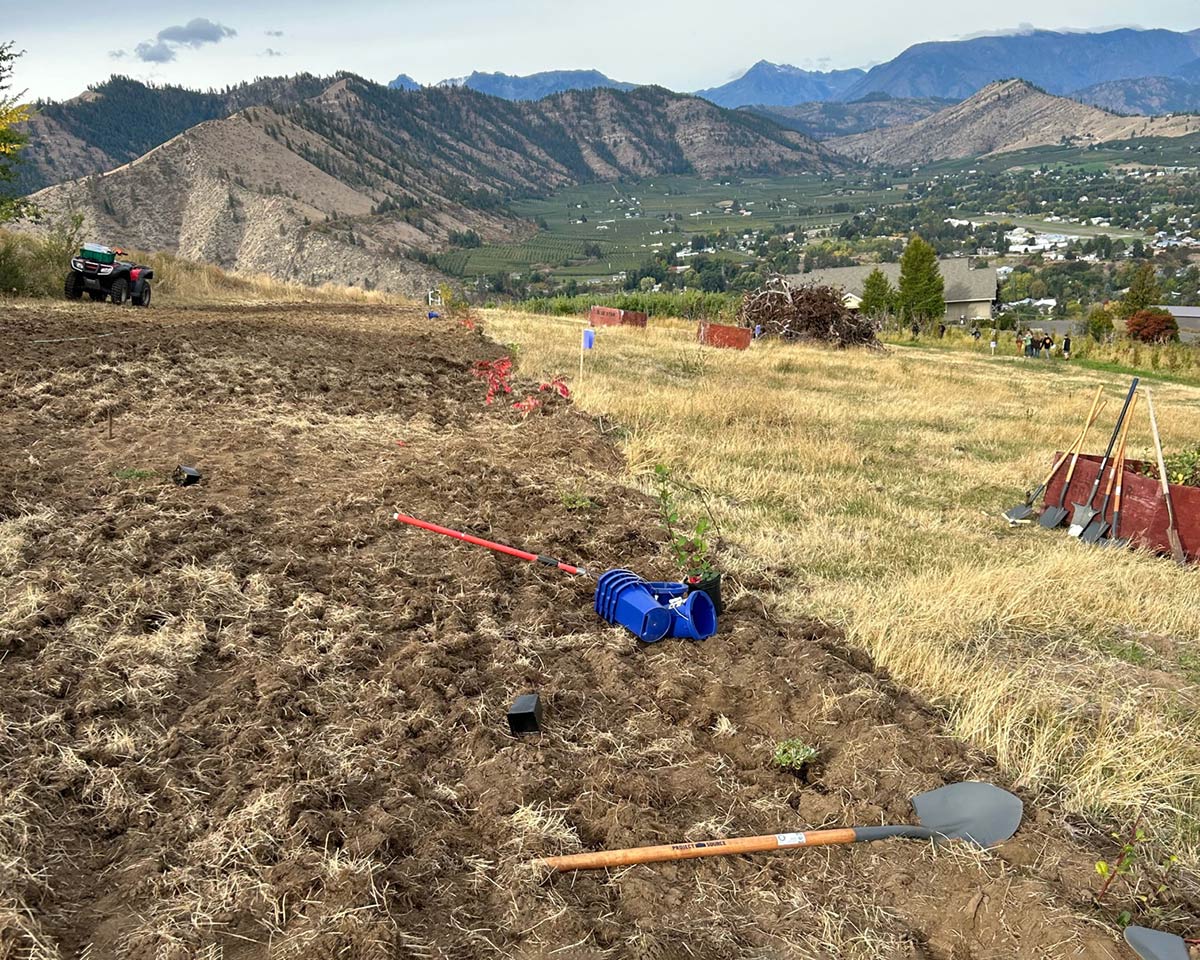
Aaron and Tab had carefully mixed 18 species of potted plants into old apple bins spaced down the 870 ft length of the strip. Species varied from short beardtongue (Penstemon), a beautiful blue-purple flower with a bell mouth, to an upland willow (Salix), a slender tree and the earliest bloomer. I had helped them choose this customized mix of plants based on our expertise at Xerces, a service we offer to each farm we work with, and they will bloom from early spring until late fall to support the pollinators and beneficial insects all year. While digging holes for these plants, students observed the wide variety of leaves and berries. The students really enjoyed digging and planting something new that would help invertebrates.
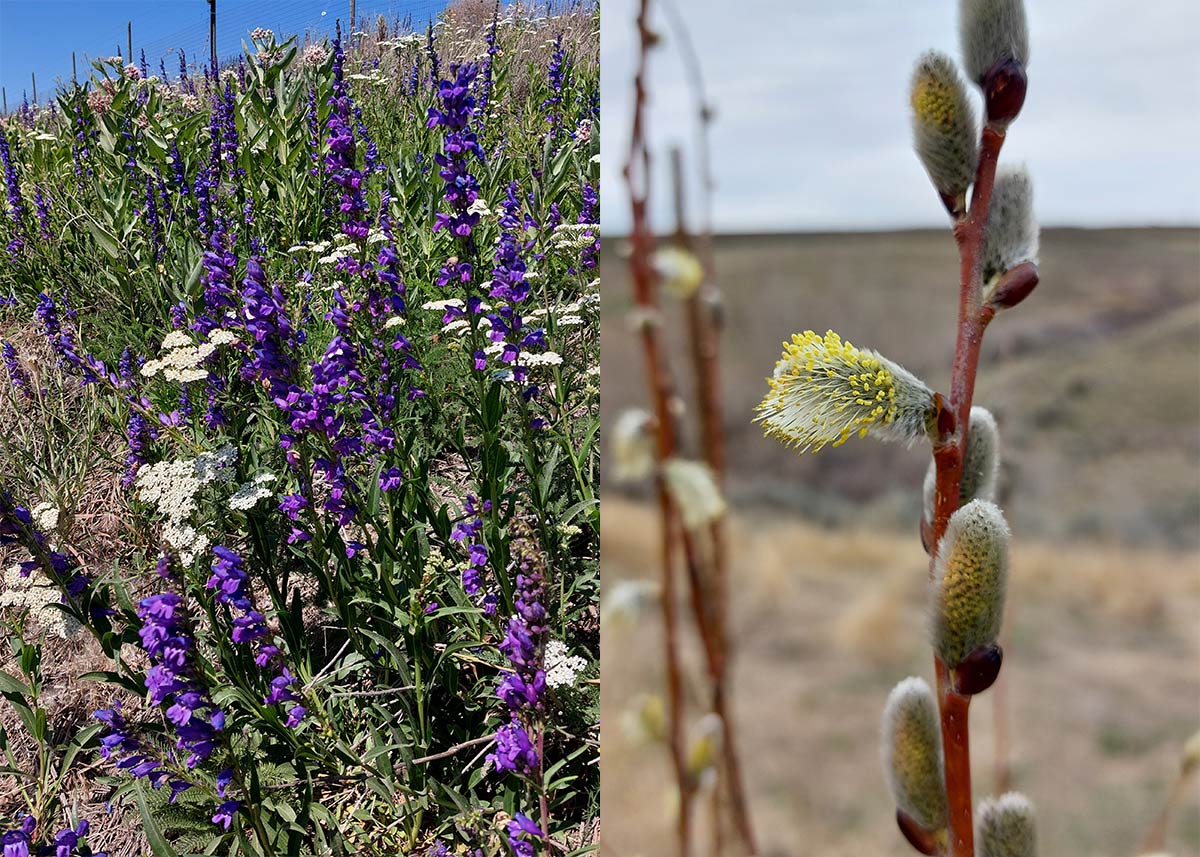
This double hedgerow was the result of many months of planning and coordination with the Hargroves. Now, the Hargroves can’t wait to bring more pollinators and beneficial insects into their farm to help their trees produce fruit with fewer and less harsh pesticide sprays. They are also interested in the results of the CIG study about what insects are visiting the plants and the soil and plant carbon sequestration over the five years of the grant.
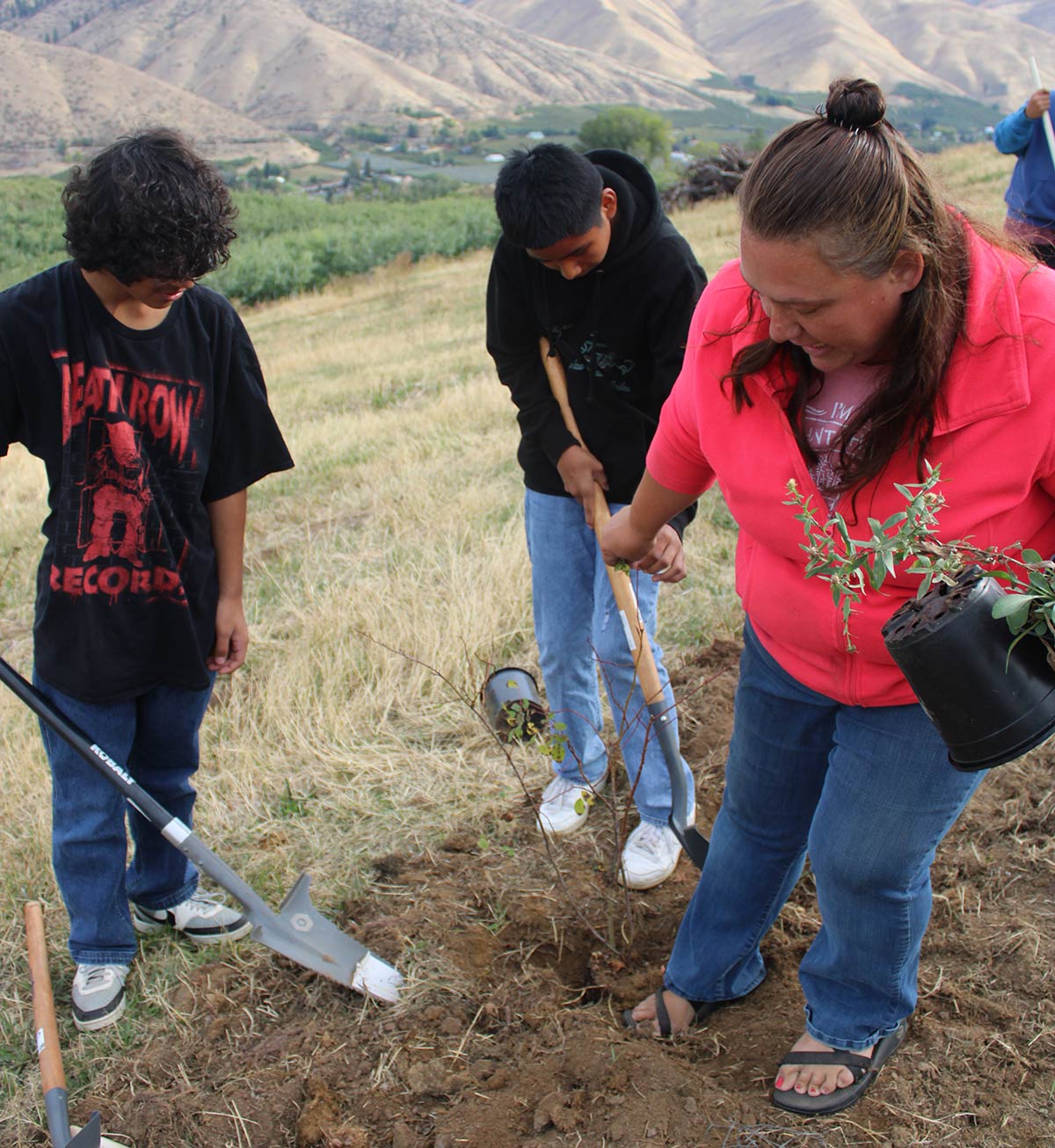
Tab Hargrove and science teacher Kelsie Maney drew together many local groups to make the day shine and help the students get a full idea of what makes a sustainable farm. These groups included Cascadia Conservation District, Washington State University Tree Fruit Station, and Stemilt Growers.
This fall science field trip to the orchard was the first of its kind, but all parties involved hope it will be an annual event so the students can watch these plants grow and add more habitat next fall. The invertebrates will certainly enjoy this new haven and make it their own in the meantime.

